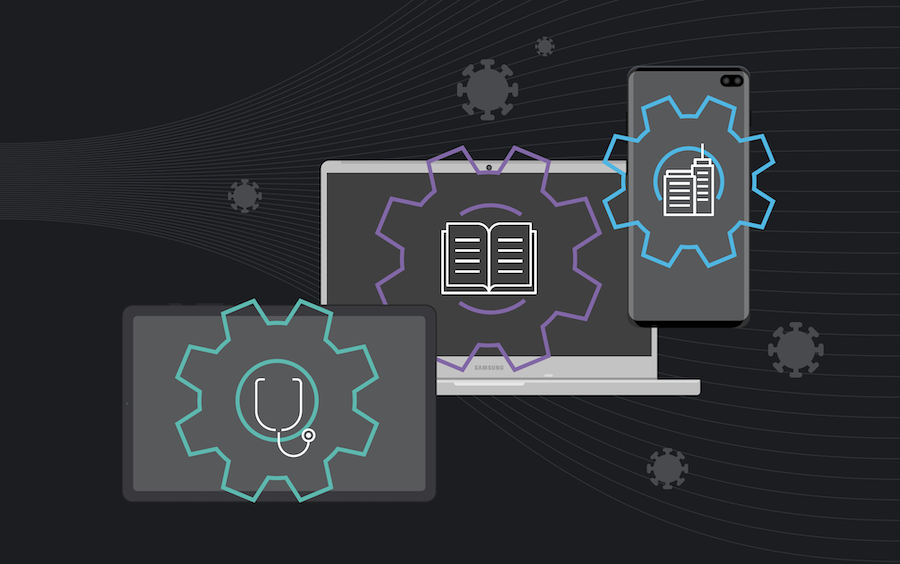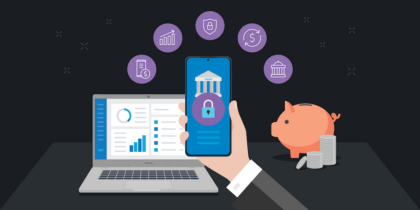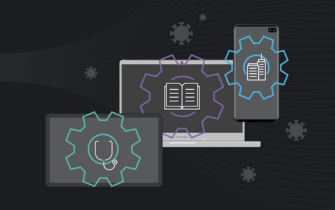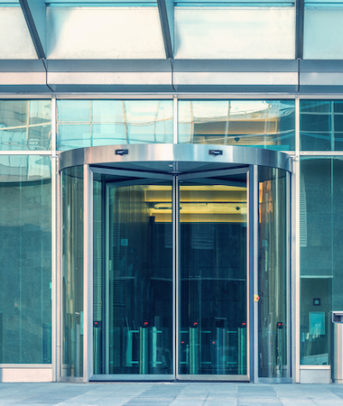Editor’s Note: This conversation is a part of our ongoing “Future State Of” series. It has been edited for length and clarity.
Since the COVID-19 crisis began, the majority of U.S. employees have worked remotely, with estimates indicating 62 percent worked from home this year compared to about 25 percent in previous years. Despite an initial adjustment period, many employees have found value in the flexibility of remote work and are eager for it to continue, even when COVID-19 subsides. In fact, 83 percent of respondents in a recent study expressed a desire to maintain the flexibility of remote work permanently. Businesses are also seeing the value of remote work through outcomes like increased employee productivity and reduced spend on resources for the office.
Technology has been critical in making this shift to mass remote work effective — for example, collaboration platforms, like Zoom and Teams, have dominated corporate life in 2020. However, it’s becoming clear that even the most technically advanced companies will have to make sweeping tech changes to ensure the anticipated future of hybrid onsite/remote work remains effective.
Taher Behbehani, GM and SVP of Samsung B2B, sits down with ServiceNow Chief Innovation Officer Dave Wright to discuss how remote work during the pandemic could permanently alter the future of work, why new tech innovations are needed to improve productivity and flexibility, and how enterprises and technologists can work together to enable the connected workplace of the future.
Taher Behbehani: Dave, thanks for speaking with me today. When the pandemic first arrived in the U.S., many of us assumed we’d be working from home temporarily, but nine months later, most of us are still remote. What is your perspective on the shift to mass remote work that happened during the pandemic? What do you think went well when people first started working from home, and what could companies have done differently to make it a more seamless transition?
Dave Wright: The first thing to realize is there’s no going back to the way things were. Personally, I’m more productive from home, and while that’s not to say the office is dead, our new normal is clearly working where you want, when you want, and how you want.
It’s an arrangement that depends on trust. You have to trust your employees to get the job done, and that’s one area in which organizations did well as we transitioned to a work from home environment. Admittedly, some managers overcompensated at first with too-frequent video check-ins. But by and large, they adapted quickly, and this initial trust set the stage for a more flexible, human world of work.
Emerging changes from the pandemic era
See key learnings and statistics from the Future State of Business 2020 survey and report. Read Here
Of course, it wasn’t entirely seamless. Organizations without an integrated workflow platform, in particular, struggled to efficiently manage the variety of tasks and processes previously handled on an ad-hoc, in-person basis — things like replacing broken hardware, sharing data with other departments, or even onboarding new employees.
In my experience, the more an organization “workflowed” its operations, the easier it found the transition to a remote environment.
TB: Companies, like Twitter for example, have announced that they’ll allow employees to work from home indefinitely. And it seems more companies will offer that option, or a variation of that option, in the future. What challenges exist with current technology offerings in making permanent remote work viable? What types of innovations need to happen to make the virtual workplace more effective and connected?
DW: For me, the question isn’t “can we make permanent remote work viable?” because in my mind, there’s really no other choice but to do so. It’s what employees want, and millennials, who will comprise 70 percent of the global workforce by 2025, in particular, overwhelmingly view flexibility in where they work as a key driver of employee satisfaction.
So, the question is less about viability than efficiency, productivity and connection. From a technology standpoint, there are two challenges that stand out.
The first is the complexity of enterprise software. That’s always been a challenge, but it’s a much larger one when employees can’t turn to the colleagues around them for help. As a result, we need to double down on building a consumerized experience at work while expanding our definition of what that means.
Here, mobile is important, and it must be joined by an intuitive user experience. But beyond that, organizations need to use backend workflows to create a single system of action — no hunting through knowledge bases or swivel chairing between systems required.
Second, and relatedly, we need a better way to collaborate and share information across departments. Again, that means cross-enterprise workflows, but it also means taking the time to understand how work flows across your organization before building solutions to match.
TB: When it comes to driving this innovation, how can tech companies and corporations work together to ensure new technology is delivered in the right way?
DW: Technology companies have to take their cue from their users. As chief innovation officer, people often assume I’m the sole source of ideas. In reality, my job is really about hearing from customers who have pushed the Now Platform to its limits — customers like the NBA, which used ServiceNow to manage “the Bubble” down in Orlando, or the City of Los Angeles, which did the same for its drive-through COVID-19 testing site.
Before the pandemic, these use cases were not top of mind, but today, it’s clear there’s very little you can’t workflow. And this experience provides a blueprint for tech and corporations to work together because ultimately, it’s the customers who best understand how a product is used and where gaps in its capabilities still exist.
When we create that feedback loop, we ensure innovation is about real problem-solving, not just shiny gadgets.
TB: One aspect of remote work that people seem to value is the flexibility it provides — the ability to take the dog for a walk in the afternoon or play with the kids during the lunch hour. Technology has been a big enabler of that flexibility. For example, Samsung DeX allows users to replicate the desktop experience on a monitor or TV by using their mobile phone or tablet. Similarly, I know ServiceNow provides solutions that encourage flexibility and productivity. Tell me about current solutions or different ways people can leverage current solutions to support this desire for more freedom.
DW: Flexibility and productivity today depend, in large part, on the degree to which your company is digitally transformed, and that’s really what our workflow-driven solutions are all about. When that is the case, organizations have visibility into the status of every process and who it must go through to be completed.
As a result, we cease to rely on informal conversations to track and manage work, which means we don’t need to work the same hours and live in the same time zones in order to be productive. This is true of everything from IT ticketing to loan approvals in financial services or customer service in e-commerce.
When work is digital, we increase productivity and enable true work/life flexibility.
TB: It’s clear that remote work in some capacity will be a permanent fixture in Corporate America, even after COVID-19 is no longer a concern. From your perspective, what do you think the future of work will look like in the coming years? What do you think will be the next big change to the way we work that people may not be thinking about yet?
DW: The next few years will be defined by flexible working arrangements centered around an urban hub. While most people will work regularly from home, they’ll also commute to the office to meet colleagues and collaborate. But it certainly won’t be mandatory, and most organizations will not hesitate to hire fully remote employees if they are the best candidate available.
Longer-term, I suspect the asynchronous nature of modern work will spur new structures entirely, with corporations blending some form of gig-work with full-time employment. In this world, we’ll view work as a series of tasks collated and tracked via intelligent, automated workflows, which will allow people to work agilely and use part of their time to dip into a pool of available assignments.
Done right, I think this will improve productivity, grow employee skillsets, and increase employee satisfaction.
TB: Anything that we haven’t talked about that you want to mention?
DW: If there’s one takeaway I’d leave you with, Taher, it’s my belief in workflow revolution. As we saw during the pandemic, an organization run on a foundation of workflows is agile and resilient, and in today’s uncertain world, that makes all the difference.
TB: Thank you for your time, Dave. This has been great.
DW: Thank you!
Explore the ways Samsung is supporting the transition to remote work. And keep up to date with the latest announcements and insights by following Taher Behbehani on Twitter.








